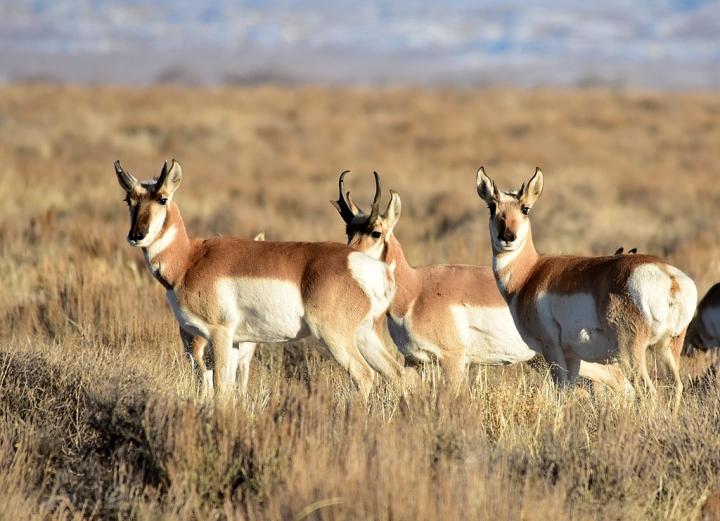
Credit: Tom Koerner/USFWS
Humans and animals alike constantly size up one another. In the workplace, a new employee quickly learns which coworkers are the most respected — and therefore hold more power. Big brothers boss around little brothers. In nature, a dominant male chimpanzee fights off would-be intruders. Even fish and octopi interact within social hierarchies.
These pecking orders have been studied within the behavioral ecology world for almost 100 years. How individuals interact can affect access to food and mates — even survival — and insights into those behaviors can lead to better management of threatened and endangered populations. But few studies have explored what the animals that live within these dominance hierarchies actually know about each other. The more animals know about each other, the more they may be able to optimize their aggression. New research, published March 3 in PNAS, offers the first big-picture look at information in these animal systems.
Using a new computational method, the researchers examined existing data on aggression — the earliest from a 1934 pigeon study — in 172 social groups across 85 species in 23 orders, looking for social dominance patterns. They found three main aggression strategies employed by individuals: simply fighting any lower-ranked opponents; specializing in fighting “close competitors” ranked just below themselves; and bullying opponents ranked much lower. The majority of the groups fell into the first category, where aggression could be explained by animals following a basic dominance hierarchy, but several groups used the more information-rich close competitors or bullying strategies to fine-tune their choice of opponents.
Rank clearly influences how one individual treats another, says biologist Elizabeth Hobson, the lead author of the study. She is currently an Assistant Professor at the University of Cincinnati and was formerly a Complexity Postdoctoral Fellow at the Santa Fe Institute, where she conducted much of the research.
“What we’re able to do with our computational approach is to get new insight into how animals are managing conflict within the groups, and the kind of information that informs those decisions,” she says. Simon DeDeo of Carnegie Mellon University and the Santa Fe Institute and Dan Mønster of Aarhus University in Denmark also contributed to the work.
Some of the results took the team by surprise. For example, it turns out that pronghorn — a speedy North American ungulate prized for its graceful gait — can be bullies. “They look so cute, right?” says Hobson. “You don’t expect them to have a bullying strategy in their group.”
Another unexpected insight was that social dominance patterns can vary from group to group within the same species. For example, one group of African elephants behave according to a close competitor hierarchy, while another group exhibits bullying behavior.
It’s unclear why dominance strategies sometimes differ among groups, but this and other studies suggest that they can change according to the context in which individuals interact.
For example, “it may be that you have near rivals, so you might have to have conflict to sort that out,” DeDeo says.
Hobson says she hopes the study will inspire other researchers to look at how social information is used within and across species. This could provide a foundation for answering even bigger questions about how social complexity arises in animals, and how animals evolved the cognitive skills to enact these social dominance patterns.
###
Media Contact
J Marshall
[email protected]
Original Source
http://www.
Related Journal Article
http://dx.




